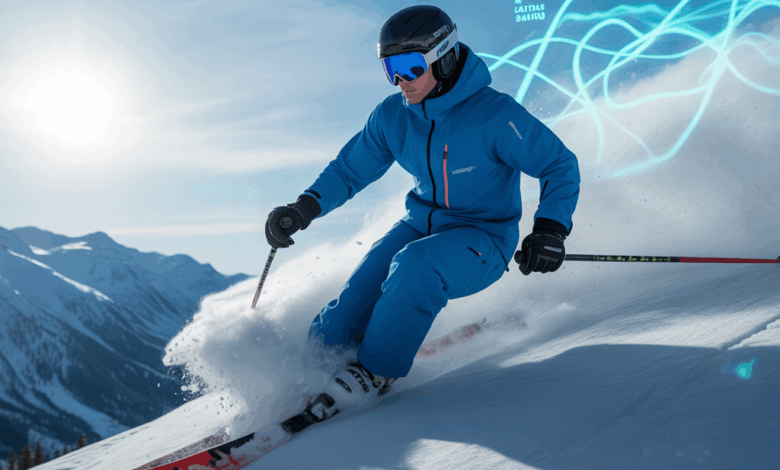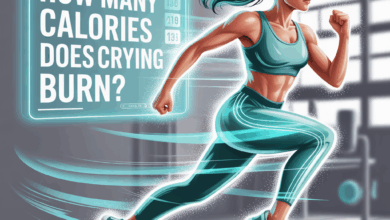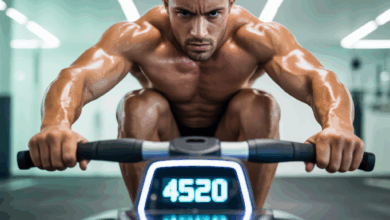How Many Calories Do You Burn Skiing? Real Estimates, Tips & Workouts

Ever finished a day on the slopes, exhausted and elated, and wondered, “How many calories did I actually burn skiing today?” Whether you’re counting calories for weight loss, tracking fitness progress, or just curious, understanding the numbers behind your time on snow can help you plan better workouts, recovery, and nutrition.
How many calories do you burn skiing? (Estimates and examples)
Skiing calorie burn depends on the type of skiing, intensity, your body weight, and how much continuous movement you do. A convenient way to estimate is using METs (Metabolic Equivalent of Task). One MET equals roughly 1 kcal/kg/hour. Here are typical MET ranges and sample calculations:
Common MET values for skiing
- Downhill / alpine skiing (moderate): ~5–7 METs
- Downhill (vigorous, steep terrain): ~7–9 METs
- Cross-country skiing (moderate): ~8–12 METs
- Cross-country (vigorous): ~12–16 METs
Example calorie calculations
Formula: Calories burned per hour = MET × weight (kg)
- A 70 kg (154 lb) person downhill skiing at 6 METs: 6 × 70 = 420 kcal/hour
- A 90 kg (198 lb) person downhill skiing at 6 METs: 6 × 90 = 540 kcal/hour
- A 70 kg person cross-country skiing at 12 METs: 12 × 70 = 840 kcal/hour
- A 90 kg person cross-country at 12 METs: 12 × 90 = 1,080 kcal/hour
These are estimates—actual burn can vary. A leisurely day skiing lift-accessed runs may be closer to 300–600 kcal/hour depending on time in motion, while an all-day backcountry or classic cross-country outing can exceed 1,000 kcal/hour during sustained effort.
Factors that affect calorie burn on the slopes
Your personal calorie burn will change with:
- Intensity and effort: Pushing hard on steep runs, aggressive carving, or classic skate technique drastically raises energy use.
- Type of skiing: Cross-country and backcountry require continuous whole-body effort and usually burn more than downhill lift-assisted days.
- Body weight & composition: Heavier bodies use more calories doing the same activity; lean muscle also increases metabolic demand.
- Terrain and snow conditions: Soft snow, powder, or deep tracks increase resistance and energy cost.
- Altitude & temperature: Cold and high elevation can increase metabolic rate slightly but also affect perceived exertion and recovery.
- Time spent moving vs. resting: Lift rides, breaks, and social stops lower average hourly burn.
Practical ski fitness tips to burn more calories and ski stronger
Want to increase your calorie burn, endurance, and reduce injury risk? Add these practical tips and workouts to your routine:
On-mountain strategies
- Choose routes with more vertical and longer continuous runs to reduce downtime between efforts.
- Mix intervals—alternate easy cruising with 3–5 minute hard efforts to boost total calorie burn.
- Try a few laps of moguls, steeps, or powder runs that demand more muscular engagement.
Off-season and pre-season workouts
Build strength, power, and endurance with ski-specific sessions:
- Strength days: squats, lunges, Romanian deadlifts, single-leg Romanian deadlifts, and step-ups (3 sets of 8–12 reps).
- Plyometrics: box jumps, lateral bounds, and skater hops to improve explosive power (2–4 sets of 6–10 reps).
- Core and balance: single-leg balance holds, Russian twists, pallof presses, and plank variations.
- Cardio/intervals: hill sprints, stair runs, or cycle intervals to simulate sustained or repeated efforts on the mountain.
Sample 20-minute ski conditioning circuit (no equipment)
- Warm-up: 3 minutes dynamic mobility (leg swings, hip circles)
- Circuit (repeat 3 times): 45s squat jumps, 45s alternating lunges, 45s mountain climbers, 45s single-leg balance, 30s rest
- Cool-down: 3–5 minutes stretching and breathing
Nutrition, recovery, and healthy lifestyle advice
Maximize performance and recovery with simple nutrition and recovery habits:
- Fuel before long ski days: prioritize carbs and moderate protein (e.g., oatmeal with yogurt and fruit) 1–2 hours before.
- Refuel on the mountain: quick carbs like fruit, energy bars, or a sandwich to maintain energy for sustained burns.
- Protein and carbs after skiing: aim for a 3:1 carb-to-protein window within 60–90 minutes for recovery.
- Hydration: cold weather disguises sweat—drink regularly and include electrolytes for long days.
- Sleep and active recovery: prioritize 7–9 hours sleep and use foam rolling, light mobility, and contrast showers to recover faster.
Real-world example: A day on the slopes
Imagine Sarah (68 kg/150 lb) spends 6 hours at a ski resort. She’s actively skiing 4 hours total (the rest spent on lifts and breaks). Using an average of 6 METs for downhill skiing:
Calories burned = 6 METs × 68 kg × 4 hours = 1,632 kcal for active skiing time. Total day burn including lifts and walking will be slightly higher. If Sarah had done a cross-country session instead at 10 METs for 2 hours: 10 × 68 × 2 = 1,360 kcal from that session alone.
Frequently Asked Questions
No. Cross-country skiing generally burns more calories because it’s continuous, whole-body aerobic work. Downhill often includes downtime on lifts which lowers average hourly calorie expenditure.
Fitness trackers provide useful estimates but can be off due to altitude, cold, and wrist movement patterns. Use them as rough guides and consider MET-based calculations for more conservative estimates.
Prioritize carbohydrates for performance and include protein for muscle repair. Slightly increase overall calorie intake to match your higher activity, and focus on nutrient-dense foods, hydration, and sleep to support recovery.
Conclusion — How many calories do you burn skiing and what now?
Skiing can be a powerful calorie-burning activity—ranging from a few hundred calories per hour on easy downhill days to 800–1,000+ kcal/hour in vigorous cross-country or backcountry outings. Use the MET formula and examples above to estimate your own burn, and combine smart on-mountain strategies with targeted strength and cardio training to get fitter and ski longer.
Ready to improve your ski fitness? Try a tailored pre-season plan from our workout routines, balance fueling with our nutrition guides, and maintain recovery habits with tips from our wellness tips collection. Hit the slopes smarter and stronger—then come back and tell us how many calories you burned!





